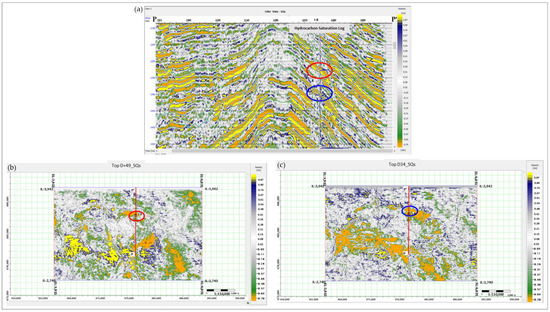

If the Basal Clastic Unit acts as a single aquifer, flow from the layers shown in Table 2 will be additive and the system will act in parallel. is a minimum estimate for Middle and Lower Deadwood permeability. The Middle and Lower Deadwood aquifers have not been cored and the geometric average permeability reported in Table 2 (104 md.) is based on core from the Upper Deadwood, a zone of somewhat lower porosity. We followed this practice by summing the logarithm of each permeability determination, dividing by the number of determinations and taking the antilogarithm as the geometric average permeability. For populations with log-normal distributions, the convention in petroleum engineering is to use a geometric average. The horizontal permeabilities (k MAX, 100 determinations) of the Winnipeg Formation core have a log-normal frequency distribution and it is expected that the other cored intervals (Upper and Basal Deadwood) would similarly have log-normal frequency distributions. The average porosity given for each aquifer ( Table 2) is an arithmetic average weighted by thickness. The compensated density log (calibrated to core porosities) was used to determine porosity for the drilled portion of the Deadwood Formation. These porosity cutoffs were utilized and are extremely important where mechanical logs are available but the rocks have not been cored.įor the Winnipeg Formation, the sonic log appears to correlate well with core porosities and it was used to evaluate the short uncored section ( Figure 4). appears to correlate with porosities of 0.090 for the Winnipeg and 0.073 for the Deadwood. A horizontal permeability (k MAX) of 9.5 md. as a lower permeability cutoff on the basis that this value is about one-tenth of the average permeability of the entire Basal Clastic Unit aquifer. Permeability and porosity cutoffs were used to supplement lithological description in distinguishing reservoir (aquifer) and nonreservoir (aquitard) rocks. The core control is very good for the Winnipeg (34 m cored, 126 samples analysed), fair for the Basal Deadwood (6 m cored, 22 samples analysed) and poor for the remainder of the Deadwood (9 m cored, 37 samples analysed). Core-determined porosities were used to calibrate the mechanical logs in the Regina 3–8 well. Jessop, in Energy Developments: New Forms, Renewables, Conservation, 1984 Aquifer properties.Īquifer properties of net effective aquifer thickness, average porosity, and average intrinsic permeability reported in Table 2 are based on core analysis and the sonic and density logs (11). Typical values of the net to gross thickness ratio are in the range of 0.65–0.85. Net thickness represents the portion of the hydrocarbon-bearing formation that can be produced by conventional means where porosity is relatively high. The concept of cutoff porosity leads to the introduction of net thickness as opposed to gross thickness of a geologic formation in estimating oil and gas reserves. However, it must be mentioned that many tight and unconventional reservoirs have lower porosity and are often produced through a network of natural and induced fractures. An implicit fact is that the geologic intervals with higher porosity have better permeability. Hence, only the portion of the geologic formation showing greater porosity is considered in reservoir performance predictions. Typical porosity cutoff points are found to be around 5% in conventional oil reservoirs. The limiting value is known as cutoff porosity. The reasons are that the volume of oil contained in low porosity rock is limited, and the rock is not conducive to flow due to relatively low permeability that is generally associated with low porosity. In producing petroleum reservoirs, a lower limit of porosity (and permeability) exists below which oil production is not economically significant. Iqbal, in Reservoir Engineering, 2016 Cutoff porosity and net formation thickness


 0 kommentar(er)
0 kommentar(er)
